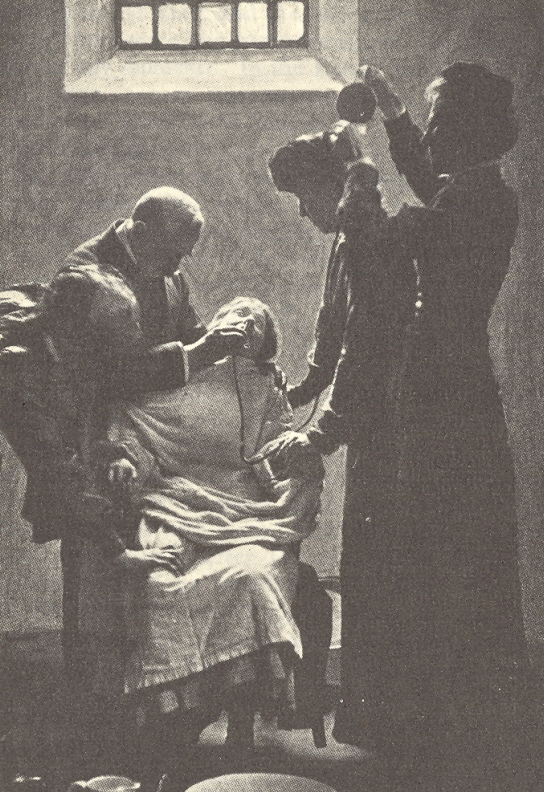Force-feeding of Suffragettes
Force-feeding was used on Suffragettes who went on hunger strike after being sent to prison. The public largely frowned upon the act of force feeding, especially as many of the A Suffragettes were young women from middle class families. As a result of public disapproval, the government ended force feeding with the Cat and Mouse Act of 1913, which released prisoners once they were weakened by hunger.
The first suffragette to go on hunger strike, Marion Wallace Dunlop, was only in prison for three days before she was release. From July 1909 other prisoners joined her example.
However, the government soon became more reluctant to release prisoners and began forcible feeding those on hunger strike in the same year. Letters to the Manchester Guardian in October of 1909 how the issue angered many Britons - some calling for the suffragettes to be left to starve, while others pointed to the immorality of essentially ‘attempting suicide’.

In a 1913 article Sylvia Pankhurst, one of the leaders of the Suffragette movement, describes the experience of being force-fed in prison. Here is an excerpt from her account:
“I struggled as hard as I could, but they were six and each one of them much bigger and stronger than I. They soon had me on the bed and firmly held down by the shoulders, the arms, the knees, and the ankles.
Then the doctors came stealing in behind. Some one seized me by the head and thrust a sheet under my chin. I felt a man's hands trying to force my mouth open. I set my teeth and tightened my lips over them with all my strength. My breath was coming so quickly that I felt as if I should suffocate. I felt his fingers trying to press my lips apart,—getting inside,—and I felt them and a steel gag running around my gums and feeling for gaps in my teeth.
I felt I should go mad; I felt like a poor wild thing caught in a steel trap. I was tugging at my head to get it free. There were two of them holding it. There were two of them wrenching at my mouth. My breath was coming faster and with a sort of low scream that was getting louder.”
The introduction of the Cat and Mouse Act in 1913 meant that prisoners on hunger strike were temporarily discharged until they got better, when they would be rearrested. It meant that if they died, it would be in their own homes, thus taking the responsibility away from government.
See also: The Suffragettes
MLA Citation/Reference
"Force-feeding of Suffragettes". HistoryLearning.com. 2024. Web.
